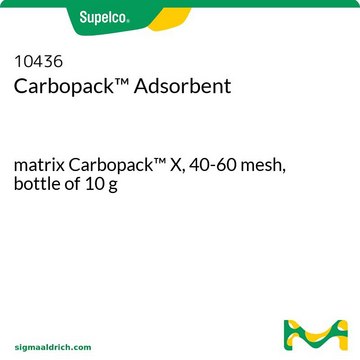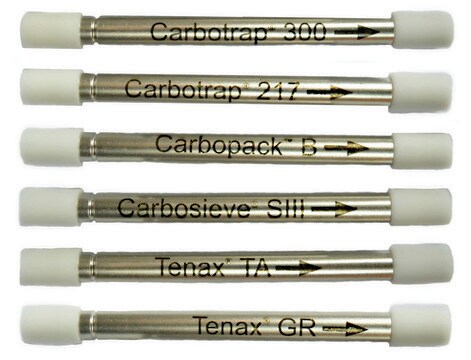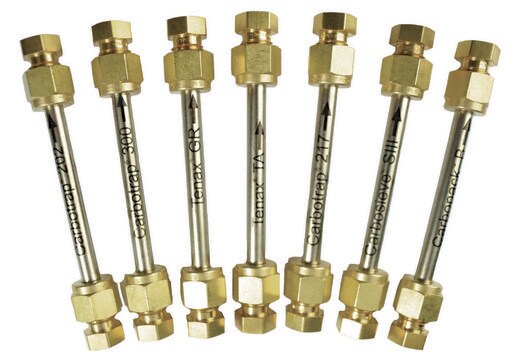29537-U
Carbopack™ X Thermal Desorption Tube
glass, O.D. x I.D. x L 1/4 in. × 3 1/2 in., fritted, preconditioned, pkg of 10 ea
About This Item
Productos recomendados
Nombre del producto
Carbopack™ X, glass TD tube, fritted, O.D. × L 1/4 in. × 3 1/2 in., preconditioned, pkg of 10 ea
Materiales
glass TD tube
Nivel de calidad
Agency
EPA TO-17
descripción
Sealed with TDS³ Storage Container
Línea del producto
Carbopack™
Características
fritted
preconditioned
envase
pkg of 10 ea
características de los productos alternativos más sostenibles
Waste Prevention
Safer Solvents and Auxiliaries
Learn more about the Principles of Green Chemistry.
sustainability
Greener Alternative Product
técnicas
active air sampling: suitable
D.E. × L
1/4 in. × 3 1/2 in.
Matriz
Carbopack™ X graphitized carbon black (GCB)
idoneidad
suitable for (For sampling 1,3-butadiene)
aplicaciones
air monitoring
environmental
industrial hygiene
compatibilidad
for analyte group C3-C5
for use with PerkinElmer, Markes, DANI, OI Analytical, and Shimadzu Instruments
mode of use adsorbent
categoría alternativa más sostenible
¿Está buscando productos similares? Visita Guía de comparación de productos
Categorías relacionadas
Descripción general
Información legal
Código de clase de almacenamiento
11 - Combustible Solids
Clase de riesgo para el agua (WGK)
WGK 1
Punto de inflamabilidad (°F)
Not applicable
Punto de inflamabilidad (°C)
Not applicable
Elija entre una de las versiones más recientes:
Certificados de análisis (COA)
It looks like we've run into a problem, but you can still download Certificates of Analysis from our Documentos section.
Si necesita más asistencia, póngase en contacto con Atención al cliente
¿Ya tiene este producto?
Encuentre la documentación para los productos que ha comprado recientemente en la Biblioteca de documentos.
Nuestro equipo de científicos tiene experiencia en todas las áreas de investigación: Ciencias de la vida, Ciencia de los materiales, Síntesis química, Cromatografía, Analítica y muchas otras.
Póngase en contacto con el Servicio técnico







